CSIR Exam Difficult Questions
50 Examples of Trap Questions You Must Never Attempt in CSIR NET Exam
It is evident that clearing the CSIR NET Exam, one of the most prestigious and leading research exams for Post Graduates, requires smart and well-planned strategies. Among all the other preparation strategies, identifying the most difficult and time-consuming questions is one of the most important strategies for successfully clearing the exam.
Such questions often tend to be what we call as the “trap questions”.
Trap questions are those types of questions that look easy and obvious answers, but there is a high chance of making a mistake. It’s like a tricky question which should be avoided.
Below are 50 examples of CSIR Exam Difficult Questions, the Trap Questions you must avoid:
CSIR Exam Difficult Questions Example 1
- A eukaryotic gene of 1000 base pairs containing several introns encodes a protein of 11 kDa. Assuming that the average molecular weight of one amino acid is 110 Da, the total length (in base pairs) of all the introns of the gene is
- 600
- 720
- 697
- 597
Answer: 3
The molecular mass of protein =11 KDa or 11,000 Da.
The average molecular mass of amino acid residue is 110 Da.
No. of amino acids in the protein = 11,000/110 = 100
One amino acid is encoded by three base pairs or one codon 100 amino acids will be coded by 100 x 3 equals to 300 base pairs.
A one-stop codon in the mRNA is also present, so a total of 303 base pairs will be coding for total protein mRNA. Subtract 303 from 1000, you get the total number of base pairs that will be coding for the introns that are equal to 697.
CSIR Exam Difficult Questions Example 2
- The diagram represents a 2 Kb insert successfully introduced between two BamH1 sites of a 3.8 Kb vector in the desired orientation. The HindIII sites on the insert and EcoRl site on the vector are also indicated. If the insert was introduced in the opposite orientation, which one of the following statements is INCORRECT?
- Digestion with EcoRI will linearize the 5.8 Kb plasmid.
- Digestion with BamH1 will yield 3.8 and one 2.0 Kb fragment.
- Double digestion with EcoRI and HindIII will produce 1.7 Kb and 4.1 Kb segments.
- Double digestion with EcoRI and HindIII will produce 2.1 Kb and 3.7 kb fragments.
Answer: 3
We have to choose two restriction enzymes in such a way so that 1 will be in the insert and the other one will be in a vector. Then whatever fragment we will get we can understand the orientation. In the pic, you can see that Hind III is present in such a way that it is causing 0.8kb and 1.2 Kb fragment. According to the pic if we digest it with Hind and Eco we will get a 0.9+0.8=1.7Kb fragment and 4.1Kb fragment. If the insert is in the opposite orientation, we will get 1.2Kb+0.9=2.1 Kb and 3.7Kb. The incorrect statement will be option C.
CSIR Exam Difficult Questions Example 3
- A DNA segment was cloned into the active site region of the lacZ gene and the recombinant plasmid introduced into lacZ- the strain of E. coli and plated on a medium containing X-gal. The colonies showed a blue color. Which one of the following statements is correct?
- The nature of the cloned DNA segment need not be special as cloning of any DNA in lac Z will result in disruption of its reading frame and production of blue color on X-gal plates.
- The cloned DNA segment could be a Group I intron whose removal from the precursor lacZ transcript in E. coli results in the production of mature lacZ mRNA which can then produce active LacZ protein.
- The cloned sequence is likely to be a lacy sequence which is naturally a part of the lac operon in E. coli.
- The cloned sequence is likely to be an anti-terminator sequence which allows full-length transcription of lacZ
Answer: 2
It is observed that even after the insertion of the gene of interest into lac Z, the colonies obtained were blue. So, probably the gene carried a self-splicing intron which might have removed itself from the RNA of lacZ. Thus restoring the activity of lac Z which gave rise to blue colonies.
Basis of blue-white selection is functional lac Z gene carrying plasmid transferred to lac Z- strain so that active beta-galactosidase can be formed, which will break down X-gal to produce blue colored colonies.
In case any gene of interest is inserted into the functional lac Z which leads to gene disruption, then active beta-galactosidase is not formed and thus no breakdown of X-gal and white-colored colonies.
CSIR Exam Difficult Questions Example 4
- A hypothetical operon involved in the synthesis of an amino acid ‘X’ is ‘ON’ (transcribing) in the presence of low levels of ‘X’ and ‘OFF’ (not transcribing) in presence of high level of ‘X’. The symbols a, b and c (in the table below) represents a structural gene for the synthesis of X (X- synthase), the operator region, and the gene encoding the repressor– but not necessarily in that order. From the following data, in which superscripts denote wild type or defective genotype, identify which are the genes for X-synthase, operator region, and the repressor.

- a b, c
- c, a, b
- b, c, a
- b, a, c
Answer: 4
If X- synthase is defective then no synthase will be detected. If the operator is defective then there will be a constitutive expression of synthase and if the repressor is defective there will be a constitutive expression of synthase if another normal copy of it is not present, because the repressor has the property of transacting also. Compare 1,2,3 genotypes, b is X-synthase (from 3). Further compare 5 and 6 will get a is the operator (from 6) and c is the repressor (from 5).
CSIR Exam Difficult Questions Example 5
- A protein X is kept in an inactive state in the cytosol as complexed with protein Y. Under certain stress stimuli, Y gets phosphorylated resulting in its proteasomal degradation. X becomes free, translocates to the nucleus, and results in the transcription of a gene which causes cell death by apoptosis. Stress stimuli were given to the following four different cases.
Case A: Protein Y has a mutation such that phosphorylation leading to proteasomal degradation does not occur.
Case B: Cells are transfected with a gene that encodes for a protein L that inhibits the translocation of protein Y to the nucleus.
Case C: Cells are transfected only with empty vectors used to transfect the gene for protein L.
Case D: Cells are treated with Z-VAD-FMK, a broad-spectrum caspase inhibitor.

Answer: 1
X when bound to Y cannot undergo gene expression and hence no apoptosis. In cases A and B, Y is still bound so no apoptosis, in case of D the caspase is inhibited so again no apoptosis but in the case of C though cells are transfected with an empty vector, protein L is not present, so it does not bind to protein Y. Thus protein Y will get degraded on having the stress stimuli, therefore apoptosis will take place.
CSIR Exam Difficult Questions Example 6
- Two individuals A and B, each of 75 kg body weight, have a similar volume of body water. Both of them had high salt snacks. However individual A also had a glass of alcoholic drink. Based on this information, which one of the following statements is true?
- A will have a lower circulating level of antidiuretic hormone (ADH) than B
- B will have a lower circulating level of antidiuretic hormone (ADH) than A
- The level of ADH will not change in these two individuals
- The reabsorption of water in the kidney will be more in A than B
Answer: 1
Alcohol is known to decrease ADH secretion. As both A and B have the same weight and both consumed high salt it would increase the osmolarity of the blood, leading to ADH release. But since A consumed alcohol, the amount of ADH release would decrease in A.
CSIR Exam Difficult Questions Example 7
- Given below are biodiversity hotspots in decreasing order of endemic plant species recorded in them. Select the correct order.
- The Western Ghats and Sri Lanka > Indo Burma > Sundaland > the Philippines
- Philippines > Sundaland > Indo Burma > the Western Ghats and Sri Lanka
- Sundaland > Indo Burma > Philippines > the Western Ghats and Sri Lanka
- The Western Ghats and Sri Lanka > Sundaland > the Philippines > Indo Burma
Answer: 3
Sundaland- Total vascular plant diversity is estimated at roughly 25,000 species and the number of endemics at 15,000. The Western Ghats has 1,500 (nearly 38 percent) species of flowering plants which are endemic. Indo-Burma- A conservative estimate of total plant diversity in the hotspot reveals about 13,500 vascular plant species, of which about 7,000 (52 percent) are endemic. At the very least, one-third of the more than 6000 vascular plant species native to the Philippines are endemic.
CSIR Exam Difficult Questions Example 8
- Which of the following is the correct increasing order for the daily net primary productivity (NPP) per unit Leaf area in different ecosystems?
- Deserts < Temperate forests < Tropical forests
- Deserts< Tropical forests< Temperate forests
- Temperate forests < Tropical forests < Deserts
- Tropical forests < Temperate forests< Deserts
Answer: 3
Deserts have the highest of the three Net Primary productivity per unit area per day.
CSIR Exam Difficult Questions Example 9
- The following are structures of stereoisomers of aldohexoses which differ in stereochemistry.
Based on the above structures, the following information was given below:
A. D-glucose and D-mannose are epimers because they differ in the stereochemistry at the C-2 position.
B. D-glucose and D-galactose are epimers because they differ in the stereochemistry at the C-4 position.
C. D-mannose and D-glucose are epimers because they differ in the stereochemistry at the C-3 position.
D. D-galactose and D-glucose are epimers because they differ in the stereochemistry at the C-5 position.
Choose one of the correct combinations of the above statements:
- A and B
- C and D
- B, C, and D
- A and D
Answer: 1
Monosaccharides like glucose, fructose, mannose, and galactose can show different isomerism. They also show stereoisomerism due to the presence of chiral carbon atoms. Those stereoisomers which are different in its configuration at only one chiral carbon atom are called Epimers. For example, glucose and galactose are Epimers of each other, as they differ in only in the position of the hydroxyl group at C4, similarly, mannose is the C-2 epimer of glucose, Mannose and galactose are not epimers; they differ from each other in respect to the stereochemistry revolving around two carbons.
CSIR Exam Difficult Questions Example 10
- In the glomerular capillary (GC), fluid moves into Bowman’s capsule through its almost entire length. But in the muscle capillary (MC), fluid moves into interstitial space at its arteriolar end. The difference between these two capillaries is explained in the following
proposed statements:
A. Afferent and efferent arterioles are present on the two ends of GC, but in MC, arteriole and venule are present on two ends.
B. The hydrostatic pressure in GC is higher than that in MC.
C. The efferent arteriole in GC has a relatively low resistance, but venules in MC has a high resistance.
D. The difference of hydrostatic pressure between two ends of GC is relatively more but it is negligible in MC.
E. The difference of oncotic pressure between two ends of MC is negligible but it is relatively more in GC.
F. The net filtration pressure falls to zero at the efferent end of GC but it is 9 mm Hg inward at the venular end of MC.
Which of the above statements is INCORRECT?
- A and B
- C and D
- E and F
- B and F
Answer: 2
Glomerulus supplied by afferent arteriole from arcuate arteries (branched from the renal artery from the aorta). The afferent arteriole is of much higher pressure than the efferent arteriole, creating a pressure gradient that drives ultrafiltration. The special arrangement of the glomerular circulation with arterioles before and after the capillary bed leads to a unique set of capillary fluid dynamics. Resistance to blood flow is applied downstream of the glomerular capillaries by the efferent arterioles varying their diameter. This results in a relatively higher hydrostatic pressure which is maintained along the whole length of the glomerular capillaries thereby favoring the filtration process. Since statement C mentions efferent arteriole in GC offers less resistance, this statement is wrong. Glomerular hydrostatic pressure is more due to short, wide, less resistance afferent arteriole which is essential for the glomerular filtration process. Statement D is also incorrect as there is a difference in the capillary hydrostatic pressure(cp) between the two ends of the MC i.e arteriolar end and venular end as mentioned in the figure.
CSIR Exam Difficult Questions Example 11
- CD4+ T cells are co-cultured with macrophages in the presence of immobilized anti-CD3 antibody under four different conditions:
- Interleukin (IL)-4 plus anti-IFN-γ antibody,
- IL-12 and anti-IL-4 antibody,
- Transforming growth factor (TGF)-β,
- TGF-β and IL-6
For three rounds to induce T-helper cell differentiation identifiable by the cytokines they express predominantly. Which of the following is the most likely combination of predominant cytokine expression in these cultures?
- (A) IL-4, (B) IFN-γ, (C) IL-10, (D) IL-17
- (A) IFN-γ, (B) IL-4, (C) IL-17, (D) IL-10
- (A) IL-17, (B) IL-4, (C) IFN-γ, (D) IL-10
- (A) IL-17, (B) IL-10, (C) IL-4, (D) IFN-γ
Answer: 1
By seeing the above diagram one can find out the exact answer. Check for the cytokines provided to the naïve cells and the cytokine released to get the right answer.
CSIR Exam Difficult Questions Example 12
- In a laboratory experiment, it was observed that both ‘Virus A’ and ‘Virus B’ could infect a mammalian host cell when infected individually. Interestingly, if the cells were first infected with ‘Virus A’ (with large MOI), Virus B failed to infect the same cell. If the Virus B (with large MOI) is added first followed by Virus A, both the virus can infect the cells. However, infection with ‘Virus A’ was found to be to a lesser extent. Considering X and Y are the receptors/co-receptors which may be involved for the virus entry, the following are few possibilities that can explain the observation.
A. ‘Virus A’ uses ‘X’ as receptor and Y as a coreceptor
B. ‘Virus B’ uses exclusively ‘Y’ as the receptor for entry
C. Both ‘Virus A’ and ‘Virus B’ need X as a receptor
Choose the option with all correct statements.
- A, B, and C
- A and B
- B and C
- A and C
Answer: 2
X should be a receptor and Y coreceptor for virus A as when MOI of virus A is more B cannot infect and in other cases when MOI of B is more A can infect but to a lesser extent so it means B has other receptor Y. So statement A and B are correct.
CSIR Exam Difficult Questions Example 13
- A single protofilament of microtubule grows at the speed of 2µm/min. Considering that there is no catastrophe in the microtubule nucleation and the size of the tubulin unit is of the order of 5 nm, how many tubulin units are added to the growing microtubule per minute?
- 400
- 1600
- 3200
- 5200
Answer: 4
Rate of formation of single protofilament = 2 µm /min or 2 x 10^-6 m/min.
Size of 1 tubulin unit = 5 nm or 5 x 10^-9 m.
Hence tubulin units added per minute to form a single protofilament will be
(2 x 10^-6)/ (5 x 10^-9) = 2000/5 = 400.
There are 13 protofilaments in a microtubule, so the total number of tubulin units added to the microtubule per minute will be 13 x 400 = 5200
CSIR Exam Difficult Questions Example 14
- The below figure shows the fluorescence emission spectra of three different proteins; protein X, protein Y, and protein Z excited at 280 nm.
Which one of the following statements gives the correct interpretation.
- Proteins (Y) and (Z) have tryptophan while protein (X) has only phenylalanine
- Proteins (X) has only tyrosine and protein (Y) has tryptophan on the surface while protein (Z) has tryptophan buried inside
- Proteins (X) has tryptophan buried inside while protein (Y) and (Z) has tryptophan on the surface
- Proteins (X) has only tyrosine and protein (Y) has tryptophan buried and protein (Z) has tryptophan on the surface
Answer: 4
Tryptophan fluorescence λmax information is to assign a Tryptophan as buried and present in a “non-polar” environment, if λmax is <∼330 nm; if λmax is longer than ∼330 nm, the Tryptophan is assigned a “polar” environment, which almost always is intended to imply on the surface with solvent exposure.
CSIR Exam Difficult Questions Example 15
- When one isolates ribosomes from the bacterial lysate, apart from the 70S, 50S, and 30 S ribosomal subunits, one also finds a small population of 100S, 130S, and 150S sub-units. EDTA dissociates these larger ribosomal subunits into the 50S and 30S, suggesting that they have both the subunits. Upon addition of cations, they reassociate into the 70S, but none of the other forms could be detected. What is the reason for not obtaining the >70S forms?
- The effects of EDTA cannot be reversed by the addition of cations.
- 100S, 130S, and 150S are a modified form of ribosomes that are irreversibly damaged by EDTA
- 100S, 130S, etc. represent polysome that cannot be reassembled denovo without other cellular components
- They are obtained as an experimental artifact in preparations of ribosomes.
Answer: 3
100S ribosomes do not have transitional activity. To obtain >70S ribosomes, it requires specific proteins. Polysome formation is just multiple ribosomes making lots of copies of that exact same protein from a single mRNA.
CSIR Exam Difficult Questions Example 16
- Lipid rafts are involved in signal transduction in cells. Rafts have a composition different from the rest of the membrane. Rafts were isolated and found to have cholesterol to sphingolipid ratio of 2:1. The estimated size of the raft is 35 nm^2. If the surface area of cholesterol is 40Ao and sphingolipid is 60Ao, how many cholesterol and sphingolipids are present in one raft?
- 50 cholesterol; 25 sphingolipid
- 200 cholesterol; 100 sphingolipid
- 40 cholesterol; 20 sphingolipid
- 20 cholesterol; 10 sphingolipid
Answer: 1
Let the number of cholesterol = 2x and sphingolipid = x
Area of cholesterol = 40A
Total area of cholesterol = 40 * 2x = 80x
Area of sphingolipid = 60A
Total area of sphingolipid = 60 * x = 60x
Total area of these 2 = 80x + 60x = 140 x
Total are of raft = 35 nm^2 = 3500 A^2
So, 140x = 3500
x = 25
Cholesterol = 50 and sphingolipid = 25
CSIR Exam Difficult Questions Example 17
- The diagram represents the competition between species 1 and species 2 according to the Lotka-Volterra model of competition
Given the conditions in the diagram, the predicted outcome of the competition is
- Unstable coexistence between species 1 and 2 because K1>K2/β and K2>K1/α
- Unstable coexistence between species 1 and 2 because K1<K2/β and K2<K1/α
- Stable coexistence between species 1 and 2 because K1>K2/β and K2>K1/α
- Stable coexistence between species 1 and 2 because K1<K2/β and K2<K1/α
Answer: 1
The figure condition states an unstable equilibrium where the isocline crosses. The intersect point is an unstable equilibrium point (closed circle) where the isoclines intersect, the important areas here are 1 and 2 to understand why the top is unstable, see these areas and predict how the populations will change, look at the zero isoclines to decide what will happen to each species you will get a similar situation as when the lines don’t intersect (one species will go extinct and the other will go to its carrying capacity). Thus, when the equilibrium is unstable, one species wins and the other loses when the system is displaced from the equilibrium point represented by the intersection of the zero isoclines.
CSIR Exam Difficult Questions Example 18
- The frequency of cells in a population that is undergoing mitosis (the mitotic index) is a convenient way to estimate the length of the cell cycle. In order to measure the cell cycle in the liver of the adult mouse by measuring the mitotic index, liver slices are prepared and stained to easily identify cells undergoing mitosis. It was observed that only 3 out of 25000 cells are found to be undergoing mitosis. Assuming that M phase lasts 30 minutes, calculate the approximate length of the cell cycle in the liver of an adult mouse?
- 76 hours
- 50 hours
- 42 hours
- 21 hours
Answer: 3
Mitotic index I = (P+M+A+T)/ TOTAL cell, N) *100 %
(P+M+A+T)-the sum of all cells in phase as prophase, metaphase, anaphase, and telophase, respectively; N — total number of cells.
Mitotic index (MI) is 3/25000 x 100 = 1.2 %
From the cell cycle, 1.2% is mitotic and the rest will obviously be interphase.
So, 1.2% is 30 minutes, so 100% (length of the total cell cycle) is 2500 minutes ie. 42hours
CSIR Exam Difficult Questions Example 19
- A person suffering from thyrotoxicosis has an extremely high level of thyroid hormone in the blood. There is a failure of feedback regulation in the hypothalamic-pituitary-thyroid axis. The detailed blood investigation exhibited a high level of the following:
A. Thyroid-stimulating hormone (TSH)
B. Thyroid-stimulating Immunoglobulin (TSI)
C. Thyroid releasing hormone (TSH)
D. Parathyroid hormone
In your opinion which one of the following is the reason for such thyrotoxicosis
- A only
- B only
- A and C
- C and D
Answer: 2
“Thyrotoxicosis” is an older term for hyperthyroidism leading to thyroid storm. Thyroid-stimulating Immunoglobulin mimics thyroid-stimulating hormone (TSH), which is the hormone that signals your thyroid to produce more T3 and T4.
CSIR Exam Difficult Questions Example 20
- Three forms of dextrans namely neutral, polyanionic, and polycationic having different molecular radii were injected separately in three groups of rats. The concentrations of dextrans in the glomerular filtrate were measured to determine the filterability of the dextrans. The possible outcomes could be as follows:
A. The dextrans having smaller diameter have greater filterability than larger dextrans.
B. Neutral dextrans were filtered more than polycationic and polyanionic dextrans.
C. Polycationic dextrans were filtered more than neutral and polyanionic dextrans.
D. Polyanionic dextrans were filtered more than neutral and polycationic dextrans.
Which one of the following combinations is correct?
- (A) only
- (B) only
- (A) and (C)
- (B) and (D)
Answer: 3
At any molecular radius, cationic dextran was more filterable than neutral and then polyanionic dextrans which are the least filterable. The dextrans having smaller diameter have greater filterability than larger dextrans.
CSIR Exam Tough Questions Example 21
- Fluorescence recovery after photobleaching (FRAP) is a method to estimate the diffusion of molecules in a membrane. Fluorescently labeled molecules such as:
i. a receptor tagged with a green fluorescent protein (GFP)
ii. a receptor labeled with GFP which interacts with the cytoskeleton
iii. a labeled lipid
iv. a labeled protein that binds to the membrane surface is photobleached and the recovery profiles (a-d) were obtained to estimate their diffusion coefficients.
The following data were obtained: Which one of the combinations is correct?
- a = i; b = ii
- b = iii; a = iv
- c = iii; d = iv
- d = ii; b = i
Answer: 2
The more motile the lipid or associated protein is, the faster the graph will recover the lost fluorescence. Receptors will have many transmembrane domains along with it, to slow down the recovery. The easiest to move is a free lipid, followed by a surface-bound protein (no inhibitions) while the last will be a protein with a cytosolic tag. So, the best recovery graph showing the least half time of recovery will be for iii and then it will be for iv.
CSIR Exam Tough Questions Example 22
- Given below is a graphical representation of plant life histories based on grime’s model in which stress, disturbance, and competition are the important factors:

- Perennial herbs, trees, and shrubs, annual plants
- Annual plants, perennial herbs, trees, and shrubs
- Annual plants, trees, and shrubs, perennial herbs
- Trees and shrubs, perennial herbs, annual plants
Answer: 2
J.P. Grime identified 2-factor gradients, disturbances, and stress. These 2 factors limit plant biomass. Stresses include factors such as the availability of water, nutrients, and light along with growth-inhibiting factors- temperature & toxins. Conversely, disturbance encompasses herbivory, pathogens, anthropogenic -human-made interactions, fore, wind, etc. Emerging from high to low combinations of stress and disturbances, 3 life strategies are used to categorize plants based on environment 1.) C- competitors 2.) S-stress tolerators and 3) R-ruderals. So, there is no viable strategy for plants in high stress and high disturbances. Therefore, categorization for this habitat type is absent. According to the figure and the discussion done above, it can be said that Annual plants have high disturbance which shows less competition. most trees are competitors exploiting conditions of low stress and low disturbance.
CSIR Exam Tough Questions Example 23
- In order to determine the primary structure of an octapeptide, the amino acid composition was determined by acid hydrolysis (A), The intact oligopeptide was treated with carboxypeptidase (B), chymotrypsin (C), trypsin (D), and CNBr (E). The peptides were separated in each case and acid hydrolysis was carried out for B-E.
The following results were obtained (the brackets represent mixtures of amino acids in each fragment):
A. (2Ala, Arg, Lys, Met, Phe, 2 Ser)
B. (Ala, Arg, Lys, Met, Phe, 2 Ser) and Ala
C. (Ala, Arg, Phe, Ser), (Ala, Lys, Met, Ser)
D. (Ala, Arg), (Lys, Phe, Ser), (Ala, Met, Ser)
E. (Ala, Arg, Lys, Met, Phe, Ser), (Ala, Ser)
Which one is the correct sequence of the oligopeptide
- Arg-Ala-Ser-Lys-Met-Phe-Ser-Ala
- Arg-Ala-Ser-Lys-Phe-Met-Ser-Ala
- Ala-Arg-Ser-Phe-Lys-Met-Ser-Ala
- Ala-Arg-Phe-Ser-Lys-Met-Ser-Ala
Answer: 3
Acid hydrolysis gives the overall composition. So we have 2 Ala, 1 Arg, 1 Lys, 1 Met, 1 Phe, and 2 Ser. Carboxypeptidase gives amino acid at carboxyl end or last amino acid so we have 1 Ala as the last amino acid of the chain. Chymotrypsin cleaves after aromatic amino acid, so it has cleaved Phe. Trypsin cleaves after Arg and Lys, so we got three fragments. CNBr cleaves after Met, we have 1 Met so 1 cleavage. Arrange these together, option 3 is the answer.
CSIR Exam Tough Questions Example 24
- The following table shows mapping data from three interrupted mating experiments using three different Hfr strains and an F- strain:
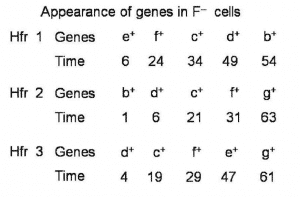
The following answers are derived:
The order of genes:
A. e g b d c f
B. f g b d c e
The distance between
C. f and g is 32 min and between f and b is 30 min
D. c and e is 28 min and between b and c is 20 min
The correct combination of answers is:
- A, C, and D
- B and C
- A and B
- B and D
Answer: 1
The order of the genes is decided depending on the time taken by the genes to enter the recipient cell. The gene that will be close to the site of integration of F plasmid will enter first. Based on that in different strains, the genes have entered into the recipient cell. By comparing 3 given strains the order of the genes will be egbdcf, the linear order in which they are entering into a recipient cell depending upon the different sites of integration of F plasmid in different strains. The time gap in entering two different genes provides distance in minutes which is true for both statements C and D.
CSIR Exam Tough Questions Example 25
- For an enzyme that follows Michaelis-Menten kinetics, by what factor does the substrate concentration has to increase to change the rate of reaction from 20% to 80% Vmax?
- A factor of 2
- A factor of 4
- A factor of 8
- A factor of 16
Answer: 4
Vmax will remain the same, but the rate of reaction changes, i.e Vo from 0.2Vmax in 1st case to 0.8 Vmax in the 2nd case, Substituting in Michaelis Menten equation,
1st case:
0.2 Vmax = Vmax x S / (km + S)
Vmax gets cancelled on both sides,
0.2km + 0.2S = S
0.2 km = 0.8S
S = 0.2/0.8 = 0.25
2nd case:
0.8Vmax = Vmax x S’ / (km + S’)
0.8km + 0.8S = S’
0.8km = 0.2S’
S’ = 0.8/0.2 = 4
Therefore, S : S’ = 0.25/4 = 1:16
CSIR Exam Tough Questions Example 26
- Autotetraploids arise by the doubling of the 2n component to 4n. There are three different pairing possibilities at meiosis in tetraploid as given below:
P. two bivalents
Q. One quadrivalent
R. One univalent + one trivalent
Which of the above pairings can lead to the production of diploid gamete?
- Only P
- Q and R
- P and R
- P and Q
Answer: 4
Since it is the case of autotetraploid, the two bivalent arrangement and quadrivalent will achieve a diploid gamete
CSIR Exam Tough Questions Example 27
- The ABO blood type in humans is under the control of autosomal multiple alleles. Color blindness is a recessive X-Linked trait. A male with a blood type A and normal vision marries a female who also has blood type A and normal vision. The couple’s first child is a male who is color blind and has an O blood group. What is the probability that their next female child has a normal vision and O blood group?
- ¼
- ¾
- 1/8
- 1
Answer: 3
As the first child has an O blood group then the genotype of parents will be AO for both of them. Also, the child is a color-blind male (xY). (X for normal chromosome and x for the mutation in color blindness). Father is normal (XY) and the mother, a carrier (Xx) as the child is a color-blind child. The probability of a child having blood group O is ¼. For the cross of color blindness, the probability of a female with normal vision is 1 (Xx x XY = XX Xx xY XY) since all females of this cross will be normal. Also, the probability of having a female offspring is ½. So the overall probability of having a female child (1/2) with normal vision (1) having blood group O (1/4) will be 1/2 x 1 x 1/4 = 1/8.
CSIR Exam Tough Questions Example 28
- The following is the biochemical pathway for purple pigment production in flowers of sweet pea:

- 9 purple: 7white
- 3 white: 1 purple
- 1 purple: 1 white
- 9 purple: 6 light purple: 1 white
Answer: 2
The question here is for a test cross between AaBb x aabb. Gametes for AaBb – AB Ab aB ab; Gametes for aabb – ab. If a cross is done, the following offsprings are got; AaBb Aabb aaBb aabb. Apart from the first genotype, all three are having at least one gene in the homozygous recessive condition, which makes them white. So the ratio for this cross will be 3 white: 1 purple.
CSIR Exam Tough Questions Example 29
- The following figure depicts the relationship between a genetic map for four genes (A, B, C, and D) and their corresponding physical map
The following statements are made to explain this relationship.
A. More number of recombination events occur between A & B as compared to B & C.
B. Lesser number of recombination events occur between C & D as compared to B & C.
C. Although the physical distance between A and B is less than that between C and D, the region between A and B is more recombinogenic.
D. The physical distance between A and B is less than that between C and D, and thus the region between A and B is less recombinogenic.
E. Although the physical distance between C and D is more than that between B and C, the region between C and D is less recombinogenic.
F. Although the physical distance between C and D is more than that between B and C, the region between C and D is more recombinogenic.
Which statements are correct?
- A and B
- C and E
- D and F
- A, C, and E
Answer: 3
Always remember that a genetic map is used to find out the gene distance theoretically whereas the physical distance is the actual distance between two points, so physical distance will be preferred in comparison to genetic map distance. The greater the distance between the genes, there are more chances of recombination. As mentioned in the question, the physical distance between A-B, B-C is 20 cM and C-D is 40 cM. The physical distance between A and B is less and C and D is more, so chances of recombination should be more in C and D in comparison to A and B, and B and C. Therefore, statement D and F is correct.
CSIR Exam Tough Questions Example 30
- During the cell cycle regulation in eukaryotes, there are post-translational modifications of protein factors, which act as switches for different phases of the cell cycle. A cell population of yeast was transfected with genes for Wee 1 kinase (modifies Cdc 2 protein). Assuming that the transfection efficiency was 50% only.
Which of the following graphical representations of the results is most appropriate?
Answer: A
Wee 1 kinase is the enzyme that adds the inhibitory phosphate at Thr161 position blocking the division of cells until and unless they have gained appropriate size. Here, in the question, the transfection efficiency is only 50 % that means the wee 1 kinase affects the cell cycle for some time interval but when this inhibitory phosphate is removed by cdc 25 phosphatase, the progression starts. The G2 phase cells enter the M phase. Only graph A shows the appropriate results.
CSIR Exam Tough Questions Example 31
- Certain chemokines are known to suppress HIV infection whereas proinflammatory cytokines are known to enhance infection. In order to explain these findings, control and chemokine receptor knock-out animals were treated with pro-inflammatory cytokines followed by HIV administration, and then the infection was assessed periodically.
Which one of the graphical representations given below best explains the experimental results.
Answer: 3
For HIV the receptor is a Chemokine receptor. Mutations in chemokine receptor genes are associated with protection against HIV infections and also involved in delayed progression to AIDS in infected individuals. Blocking of chemokine receptors interrupts HIV infection in vitro and this offers new options for therapeutic strategies
CSIR Exam Tough Questions Example 32
- A western blot analysis after treating cancer cells with a prospective anti-cancer drug is shown below:
The following assumptions were made:
A. The drug may have arrested the growth of cells at the GI phase.
B. The drug targeted the JAK-STAT signaling pathway.
C. The drug led to apoptosis of the cells.
D. Drug-induced apoptosis was through the extrinsic or mitochondrial-independent pathway.
Which one of the following combinations is correct?
- Only B and D
- A, B, and C
- Only A and B
- B, C, and D
Answer: 2
Since cleaved PARP concentration is increasing in drug-treated cells, we can conclude that the cell is moving towards apoptosis. The CDK6 kinase activity is detected in the mid-G1 phase of the cell cycle and is responsible for the phosphorylation and regulation of the activity of tumor suppressor protein Rb. Cell cycle entry requires the phosphorylation of Rb by cyclin-Cdk complexes. Since the concentration of Cdk6 and Cyclin D1 is accumulating, the cell cycle may be arrested.
CSIR Exam Tough Questions Example 33
- Two Hfr strains, Hfr-1 (arg+ leu+ gal+ strs) and Hfr-2 (arg+ his+gal+ purr strs) were mated with a F- strain (arg+ leu+ gal+ his+ purr strs). The results of the interrupted mating experiments are shown as plots ‘a’ and ‘b’, respectively.
Based on these results, identify which of the options accurately reflects the order of loci?
Answer: 2
Check on the basis of time. The earlier the gene enters, the early it is in the sequence. The late transferred gene is later in the sequence. So accordingly at the earliest time arg is entering and after 10 min his and then at 20 min leu is entering, then gal and pur at 38 min.
CSIR Exam Tough Questions Example 34
- The oligopeptide F-A-R-P-M-T-S-R-P-G-F is treated with trypsin, chymotrypsin, and carboxypeptidase B. Apart from the original peptide, the number of fragments obtained will be:
- 4
- 3
- 2
- 0
Answer: 4
There will be no fragmentation because trypsin, chymotrypsin are endopeptidases and will not cleave 1st and last bonds. Also, trypsin will not cleave if the bond is succeeded by proline. Carboxypeptidase B will not work because it works only on Lysine, Arginine, or ornithine at C-terminus.
CSIR Exam Tough Questions Example 35
- Temporal isolation in breeding seasons between closely related species leads to reproductive isolation. Given below are breeding seasons of different species of frogs.

- Plot A
- Plots A and B
- Plots B and C
- Plots A and C
Answer: 3
Sympatric isolation may result from temporal isolation. Even though two populations remain at the same place they cannot breed as they have different breeding seasons.
CSIR Exam Tough Questions Example 36
- An integral membrane protein (P) has been identified as a cell surface protein of hepatocytes and assigned to bind to the hepatitis B virus (HBV) and promote its entry into the cytosol. Upon binding to HBV particles, the C-terminal of P interacts with F-actin in the cytosol and in turn, helps in the entry of the HBV particles. P was successfully cloned and expressed in animal cells in a culture wherein its N-terminal is exposed on the surface while the C-terminal resides in the cytosol. The recombinant protein P so expressed retains its complete structure and function. From the list of experiments given below, which one of the experiments will you perform to show the C-terminal of the protein P via interacting with F-actin helps in HBV entry?
Choose Your Answer:
- Incubating radiolabelled HBV with hepatocytes in culture and follow up its association with F-actin by immunoprecipitation analysis using an anti-F-actin antibody.
- Incubating radiolabelled HBV with hepatocytes over-expressing the C-terminal mutant of P and repeat the rest of the experiment as in 1.
- Incubating radiolabelled HBV with hepatocytes overexpressing the N-terminal mutant of P and repeat the rest of the experiment as in 1.
- Using wild type P as well as C-terminal mutant of P and their individual overexpression in a heterologous cell line (completely devoid of endogenous P protein) and then repeat the experiment as in 1.
Answer: 4
In host-pathogen interaction, the C terminal of HBV(P) protein interacts with F actin of the host and viral entry occurs. To confirm the importance of C terminal part of (P) protein, Wild type and mutant type (P) protein ( defective for C terminal end ) can be compared. Protein-protein interaction can be studied using immunoprecipitation and blotting. This can be done by incubating radiolabelled HBV(P) along with F actin and F actin autoantibodies. The (P) with the C part will interact with radiolabelled HBV and can be detected. The defective (P) will not interact rather F actin and autoantibodies for F actin will interact.
CSIR Exam Tough Questions Example 37
- Birds in a population show two foraging phenotypes, A and B. Birds of phenotype A search, attack, and capture prey while birds of phenotype B steal prey from birds of phenotype A. A and B are maintained in the population through negative frequency-dependent selection. The graph below shows the fitness of A (broken line) and B (solid line) at different relative frequencies of A (frequency of B=1-frequency of A):
Which of the following statements does the graph support?
- A outcomes B; at equilibrium, A goes to fixation
- B outcomes A; at equilibrium, B goes to fixation
- A and B are both maintained in the population; the equilibrium frequencies are A=0.6, B=0.4
- A and B are both maintained in the population; the equilibrium frequencies are A=0.9, B=0.41
Answer: 3
From the graph, it is clear that at equilibrium i.e. at the point when A and B meet at that point frequency of A=0.6 hence B=0.4 i.e. (Frequency of B= 1-Frequency of A). Negative frequency-dependent selection is a powerful type of balancing selection that maintains many natural polymorphisms, but it is also commonly misinterpreted.
CSIR Exam Tough Questions Example 38
- Polysome profiling of cells treated with three hypothetical translation inhibitors is shown in the plots below. These three inhibitors are:
(i) CHP – leaky inhibitor of translation
(ii) LTM – arrests ribosome at the initiation codon
(iii) PTM – inhibits ribosome scanning

- (i) – a; (ii) – b; (iii) – c
- (i) – b; (ii) – c; (iii) – a
- (i) – c; (ii) – b; (iii) – a
- (i) – a; (ii) – c; (iii) – b
Answer: 1
Polysome profiling is a technique in molecular biology used to study the association of mRNAs with ribosomes. Since CHP is a leaky inhibitor, a weak inhibitor, the degree of its effect on translation events will be less. While polysome profiling the graph will show peaks for the small subunit of ribosome (the 40S), large subunit of ribosome (60S), assembly of the small and large subunit (formed after the translation initiation step), and for polysome (multiple ribosomes held together by a strand of m RNA ) which can be clearly seen in the graph a. LTM inhibitor arrests translation at initiation, hence peaks for 40 S, 60 S, and 80 S are seen but no peak corresponding to polysome, shown by graph b. PTM inhibitor is inhibited at ribosome scanning only so peaks corresponding to small subunit and large units are seen but not against their assembly.
CSIR Exam Tough Questions Example 39
- Following sets of Plasmodium falciparum sporozoites:
(i) normal sporozoites
(ii) sporozoites with a mutation in the C-terminal of circumsporozoite (CS) antigen
(iii) sporozoites with a mutation in the N-terminal of circumsporozoite (CS) antigen are injected into 2 groups of mice, one normal (Group A) and one (Group B) where localized knockdown of heparan sulfate receptor for CS antigen in the liver (cells) is achieved by injecting specific shRNA expressing lentiviral particles in the liver prior to infection. 15 days post-infection, parasitemia is measured by counting infected RBC through Giemsa staining.
Which of the following groups will show the maximum level of parasitemia?
- Group B with the set (i)
- Group A with the set (ii)
- Group A with the set (iii)
- Group B with the set (ii)
Answer: 3
Normal sporozoites should infect in the usual way in normal mouse group A, but are unable to infect group B mice as the receptor for CS is missing. On the hepatocyte surface, the proteolytic cleavage of region L at N terminal exposes the adhesive domain of C terminus, thereby helping in the invasion. So, a mutation in the C terminal should not allow binding to the liver cell, hence no infection. Thus high levels of parasitemia may be observed in the normal CS or CS with a mutation in N terminus with group A mouse.
CSIR Exam Tough Questions Example 40
- A transposon carrying a promoterless –galactosidase (lacZ) was used to create an insertional mutation in the vir region of the Ti-plasmid of Agrobacterium tumefaciens. All the mutants in which lac Z fusion was in the frame were divided into the following three groups:
A. The virulence of the bacteria was completely lost and the lacZ fusion was induced by acetosyringone.
B. The virulence of the bacteria was reduced and the lacZ was induced by acetosyringone.
C. The virulence of the bacteria was completely lost and the lacZ fusion was not induced by acetosyringone.
Which of the following assumptions are valid about these mutants?
- In group A, the insertion could be in vir B, C, D, or G; in group B the insertion could be in virC or E, and in group C the insertion could be in vir A or G.
- In group A, the insertion could be in vir A, B, C, or D; in group B the insertion could be in either virC or D; and in group C the insertion could be in virG.
- In group A, the insertion could be in virA, in group B the insertion could be in virB; and in group C the insertion could be in virC.
- In group A, the insertion could be in virG; in group B the insertion could be in virB, D, and E; in group C the insertion could be in vir A.
Answer: 2
One can analyze this by going through the roles of different vir genes.
- The virulence region consists of 24 genes in total
- Virulence genes are located in 8 operons from virA-virH
- vir A vir F and vir G are monocistronic operons, whereas vir B, C, D, E, H are polycistronic
- vir A senses acetosyringone
- vir G transcriptional activator of vir box
- vir B conjugational pores between plant cell and bacteria
- vir D1 essential for cleavage of a supercoiled stranded substrate
- vir E responsible for gene transfer protein
- vir C helps in DNA transfer
- vir B11 ATPase activity-provides energy for DNA
CSIR Exam Tough Questions Example 41
- A phenotypically normal fruit fly was crossed to another fly whose phenotype was not recorded. Of the progeny, 3/8 were wild type, 3/8 had ebony body color, 1/8 had vestigial wings and 1/8 had ebony body color and vestigial wings. Ebony body color and vestigial wings are recessive characters and their genes are located on two different autosomes. Based on this information which one of the following is the likely genotype of the parents?
- ee vg vg and e+e+ vg+ vg
- ee vg+ vg and e+e vg+ vg
- e+e vg vg and e+e+ vg+ vg
- e+e vg+vg and e+e vg+ vg
Answer: 2
If you carefully analyze the parental genotypes in options 1 and 3 you will see one of the parents is e+e+. so it will always give a gamete with e+. Since ebony body color is a recessive character it can only be expressed in ee condition which is not possible if one of the parents is e+e+. so we can eliminate options 1 and 3. Similarly in option 4 both, the parents are heterozygous and both genes are assorting independently we should get a 9:3:3:1 ratio in the progeny but we don’t get progeny in that ratio. so option 4 is also not possible. Therefore, the right answer is option B.
CSIR Exam Tough Questions Example 42
- The solubility of gases in water depends on their interaction with water molecules. Four gases i.e. carbon dioxide, oxygen, sulfur dioxide, and ammonia are dissolved in water. In terms of their solubility which of the following statements is correct.
- Ammonia>Oxygen>Sulphur dioxide>Carbon dioxide
- Oxygen>Carbon dioxide> Sulphur dioxide> Ammonia
- Sulphur dioxide> Oxygen> Ammonia>Carbon dioxide
- Ammonia>Sulphur dioxide>Carbon dioxide>Oxygen
Answer: 4
Solubility depends on H bonding with water molecules. And the ability to H bond, in turn, depends on the polarity of the molecule. If the difference of electronegativity between the constituent atoms is more, polarity is more. CO2 is more soluble in water than O2. As there is a difference in the electronegativities of C and O as they are two different atoms, whereas, O2 is a molecule with the same atoms, so no difference in electronegativity. CO2 reacts with water to form carbonic acid, H2CO3. Similarly, SO2, NO2 has a higher solubility in water than CO2, because the electronegativity difference between S and O / N and O is higher than C and O. Out of all these, ammonia has the highest solubility, as the difference between N and H, is maximum.
CSIR Exam Tough Questions Example 43
- To understand the microtubule-dependent motor activity of a freshly purified motor protein from budding yeast, a researcher set up a microtubule-based gliding assay. In such an assay where microtubules are fluorescently tagged at its (+) end, the researcher observed that this motor protein moves the microtubules in the direction of its (+) end as shown below: the newly identified motor protein is
- Dynein
- Myosin
- Kinesin I
- Either Dynein or Kinesin I
Answer: 1
The displacement of a microtubule is from – to + but the motor protein (the circles) are moving towards – end so dynein. It says ” this motor protein moves the microtubule to + end”, means itself it moves to – end.
CSIR Exam Tough Questions Example 44
- In a mitochondrial respiration experiment, a researcher observed the following profile of oxygen consumption upon the addition of the following compounds at times I, II, and III.
(a) ADP + Pi
(b) Dinitrophenol, an uncoupler
(c) Oligomycin, an ATPase inhibitor
(d) Cyanide
(e) Succinate
Which of the following describes the profile appropriately?
- I -b; II -d; III –e
- I -a; II -d; III -c
- I -a; II -e; III –c
- I -a; II -c; III -b
Answer: 4
In Kreb’s cycle, the enzyme isocitrate dehydrogenase is inhibited by NADH and ATP but activated by ADP. Similarly, citrate synthase is inhibited by citrate and ATP. Here at the time I, the addition of ADP causes an increase in mitochondrial respiration. At time II, the addition of oligomycin inhibits ATPase and thus ATP will not convert to ADP. Thus increase in ATP conc. causes, decrease in mitochondrial respiration. Dinitrophenol acts as an uncoupling agent, when added to cells, they stop ATP synthesis but electron transport still continues and so oxygen is still consumed. This is a very analytical question and the answers for II and III times have will be based on what you consider for the time I, so if you get the 1 st wrong, others also can get wrong.
CSIR Exam Tough Questions Example 45
- Two experiments were performed. In the first one, Okazaki fragments were prepared from a replicating cell of E. coli grown in the presence of P32. In the other, the two strands of E. coli chromosomes were separated into an H strand and L strand, immobilized onto a nitrocellulose membrane and hybridized with the Okazaki fragments prepared in the first experiment. Which one of the following options correctly describes the observation?
- Okazaki fragments will hybridize to only H strand
- Okazaki fragments will hybridize to only L strand
- Okazaki fragments will hybridize with both H and L strands
- Because the H and L strands have been prepared from different cultures of E. coli, the Okazaki fragments will hybridize to neither.
Answer: 3
DNA replication in E. coli is bidirectional, so H and L will give rise to Okazaki fragments. Hence both strands will hybridize.
CSIR Exam Tough Questions Example 46
- Identify the pollinators for the flowers with the following pollination syndromes:
A. Flower dull-colored, located away from foliage, floral parts turgid
B. Flowers bright red, crowded, turgid nectar watery and sucrose rich
C. Flowers white with a pleasant odor, corolla tube long, night-blooming
- A) Bird B) Butterfly C) Bat
- A) Bat B) Bird C) Moth
- A) Bat B) Bird C) Bee
- A) Bird B) Bat C) Carrion fly
Answer: 2
It seems to be easy, but here students get confused as the options here are moth as well as the carrion fly. Also in the question sucrose rich is present in bright flowers and butterfly is also in the option.
CSIR Exam Tough Questions Example 47
- While testing the effect of several potent anti-cancer compounds on cycling human oral cancer cells, a student observed that a major percentage of cells showed dose-dependent cell death after 12 hours of drug treatment. However, the remaining cells repopulated the culture dish once the compounds were removed and the cells were cultured in complete medium. The student made the following assumptions:
A. Not all cells were equally affected by the compounds as they were not synchronized before treatment.
B. The compound selectively killed cells that were in the G0 phase.
C. The cancer stem cells were impervious to the effects of the compounds and therefore repopulated culture.
D. The cancer cells differentiated into a mesenchymal phenotype and grew in fresh culture medium containing inhibitors of epithelial-to-mesenchymal transition (EMT).
Which one of the following combinations of assumptions would best justify the results?
- B and C
- A and C
- B and D
- A and B
Answer: 2
A typical Part C question, experimental analysis, may seem answerable, but all options will seem possible if you have only superficial knowledge, in which case you should reject this question. Only a detailed preparation will get you the right answer, which is option 2. Accordingly, you can decide.
CSIR Exam Tough Questions Example 48
- The complexity of a food web in a community is quantified using certain parameters which are defined below. Which of the following is an INCORRECT representation?
Answer: 3
All are correct except, Potential links which are calculated as N=n(n-1)/2.
CSIR Exam Tough Questions Example 49
- C. elegans embryo uses both autonomous and conditional modes of the specification. Conditional specification at the 4-cell stage can be seen in the development of the endoderm cell lineage and also in the establishment of the dorsal-ventral axis. The following are a few statements regarding this:
A. If the P2 cell is removed at the early 4-cell stage, the EMS cell will divide into two MS cells and no endoderm will be made.
B. In pop-1 deficient embryos, both EMS daughter cells become E cells.
C. When the position of ABa and ABp was reversed, their fates get reversed, and no normal embryo forms.
D. In embryos whose mother has mutant glp-1, ABp is transformed into ABa cell.
Which of the above statements are true?
- A, B, and D
- A, B, and C
- B, C, and D
- A, C, and D
Answer: 1
Guess what is wrong with this question? Just 1 word, that’s it. Rest everything mentioned is true. In the 3rd statement, ‘no normal embryo forms’ this should be ‘normal embryo forms’. So if you miss out on this no word, you will fall into the trap of this question.
CSIR Exam Tough Questions Example 50
- The gel to liquid crystalline temperature Tm of phospholipids is dependent on the fatty acid composition. Considering this Tm of
- All the phospholipids will be identical
- DPPC will be the lowest and DOPC will be the highest
- POPC and DOPC will be identical and lower than DMPC or DPPC
- DOPC will be lowest and DPPC will be highest
Answer: 4
Stearic acid is saturated and has 18 carbons, palmitic is also saturated and has16 carbon, so the choline which has stearic acid at both positions will have a higher melting temperature, compared to the one which has palmitic acid at both positions, than one palmitic and one oleic acid (oleic acid is 18 carbon and monounsaturated fatty acid), and with oleic acid at both positions will have the minimum melting temperature.
These 50 examples of CSIR exam difficult questions to avoid would have surely given you an idea of how to identify the trap questions in the paper. Once you identify these tricky questions, you can save yourself a lot of time to work on the easier questions in each part. This will enable you to have a smart approach in answering your question paper. With a mindful preparation strategy before the exam and a smart answering strategy during the exam, you are going to be unstoppable in reaching your goal of qualifying the CSIR NET Exam with flying colors!


























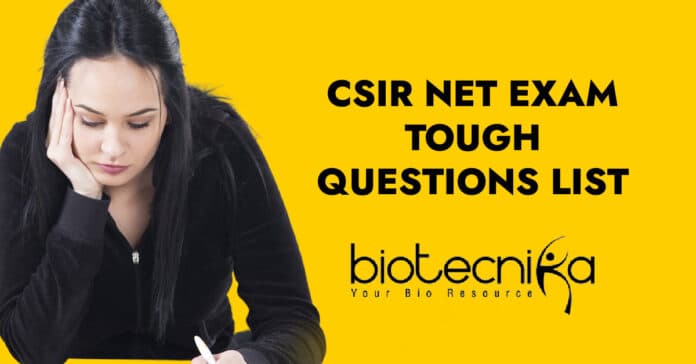












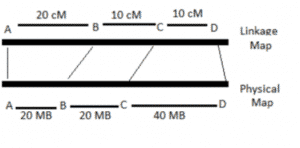


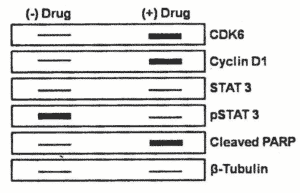

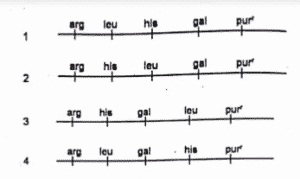


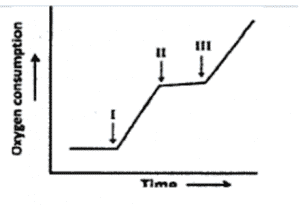
















Thank u soo much it helps me alot